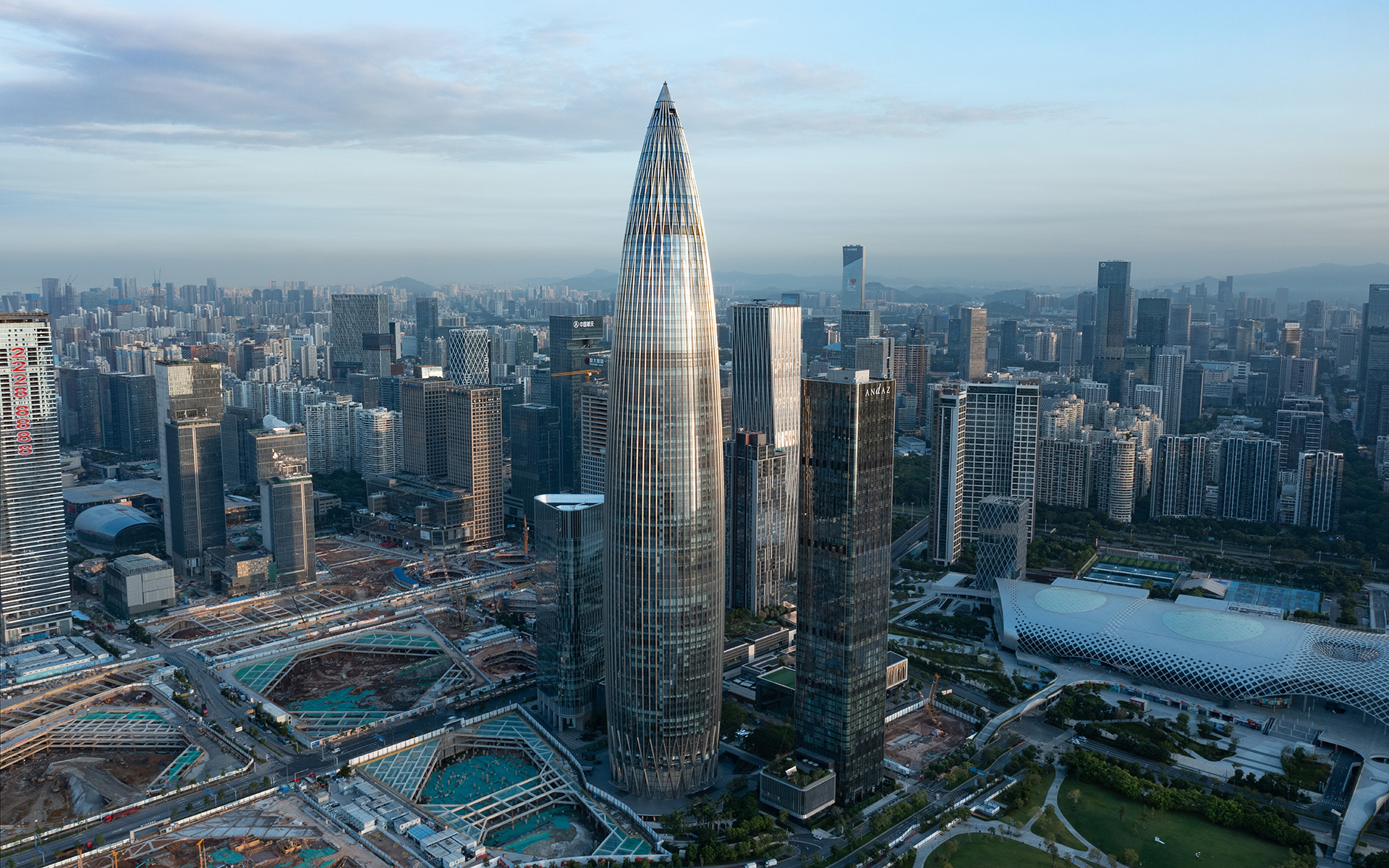Shenzhen has evolved from a low-cost manufacturing base to a global center of innovation that remains critical to the world’s supply chains.
City Class Score
| Commercial Hubs | |
| Export Champions | |
| Mobility Connectors | |
| Climate Resilient |
Corporate HQs, MNC presence, branded outlets, hotels, manufacturing, start-up ecosystem,
transport linkages, population, and income.
Go to the class information
Manufacturing, industrial parks, export share and share change by category, air and port
infrastructure, freight time to market, trade agreements, and expert interviews.
Go to the class information
Passenger traffic, flight connectivity, air-cargo flights, port infrastructure, container
ship sailings, and major road networks.
Go to the class information
Coastal and river flooding, extreme rain, extreme heat and humidity, cyclones, and water
scarcity.
Go to the class information
Shenzhen’s 2024 National Day celebrations kicked off with a show featuring more
than 10,000 drones soaring over Shenzhen Bay Park, transitioning effortlessly between depictions of
birds, spaceships, and the city’s iconic skyline. A departing visitor could order a taxi with a few
taps on a phone, a sleek, locally manufactured electric vehicle arriving silently within minutes. On
the journey home, the rider might catch a glimpse of the 115-floor Ping An Financial Centre or any
of the bustling hardware accelerators that dot the city. A humble fishing village in the 1990s,
Shenzhen has transformed into a global innovation hub.
Shenzhen already ships over $340
billion worth of goods annually — similar to Vietnam. And the city’s industries are evolving at a
rapid pace. As apparel and clothing manufacturers move operations to lower-cost locations, more
advanced sectors are stepping in to fill the gap. Shenzhen is now a significant player in the
production of electric vehicles and lithium batteries, among other high-tech goods, ensuring it will
remain a vital part of global supply chains. Although tariffs on these products may increase,
especially in the United States, it will be challenging for major economic powers to completely
decouple from China, and Shenzhen’s exports to the world are poised to keep growing.
The
list of leading global companies based in Shenzhen reflects this industrial evolution. BYD has
swiftly risen to become one of the world’s largest electric vehicle brands, its cars spotted on
streets from Madrid to Riyadh.
Huawei stands as a global leader in information and communication technology, navigating
geopolitical challenges while serving as a key supplier to many cities that rely on its equipment.
Meanwhile, Mindray Bio-Medical Electronics may not be a household name globally, but it is a
significant exporter of advanced medical equipment. These brands, along with many others, ensure
that Shenzhen remains a key player on the world stage.
Supporting this industrial prowess
is Shenzhen’s impressive logistics infrastructure. The city boasts air cargo flights to more than 60
international destinations, ranking among the top five in the world for flight volume, a reflection
of the surge in shipments of high-value electronics like smartphones. Manufacturers shipping by sea
enjoy easy access to some of the world’s busiest ports right in Shenzhen, where container vessel
traffic also ranks in the top five globally, alongside neighboring Hong Kong. With a highly
developed road network, transferring products to ports is easy, allowing suppliers to swiftly ship
component parts to final buyers for assembly.

